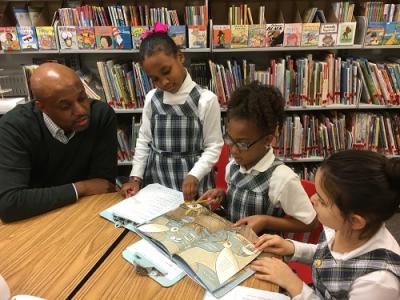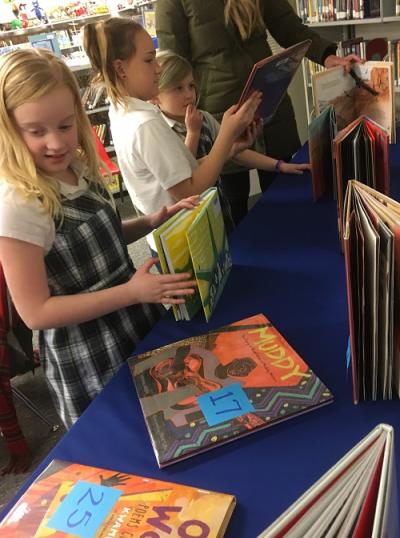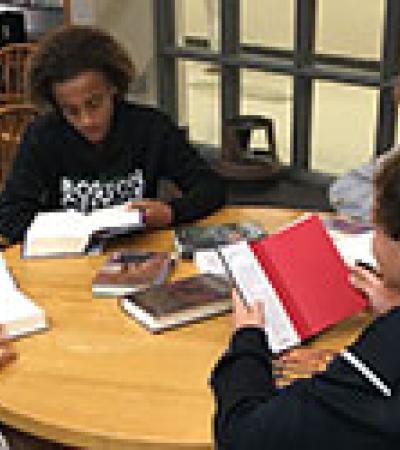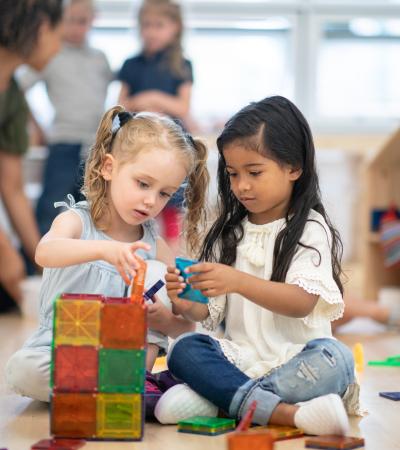Those of us immersed in the world of children’s literature look forward to ALA’s Youth Media Awards for originality and creativity in children and young adult literature. One award that KidLit aficionados are focused upon is the Caldecott Medal, given to the most distinguished picture book of the year.
A great way to build enthusiasm for the awards is to throw a Caldecott Prediction Party and invite your students or patrons to predict which book they think will win.

This can be a one-hour, one-day or one-week event. It works best to hold the party proximate to when the Caldecott Medal winner is announced at the ALA Midwinter Meeting, typically the end of January or early February.
Create your list
Your first task is to gather potential contenders for the Caldecott Medal. For 2019 you’ll look at books published in 2018, and there are thousands of possibilities.
Don’t let the number of titles overwhelm you. There are a lot of people with informed opinions about which books might win; you can use their suggestions to curate a list of books for your party.
Choose about 25 to 30 books. You can choose more, but most people — children and adults — will start losing interest after looking at 30 books. Check out blogs, visit websites, read reviews and look at all the “Best Books of the Year” lists.
Here are some of the sources we used:
- The New York Times Book Review: Kids Notables
- School Library Journal: 2018 Best Books
- The Children’s Book Council
- Kirkus: Best Picture Books of 2018
- 100 Scope Notes: 2019 Caldecott Medal Predictions
Gather the books
Once your list is compiled, gather a copy of each book. If your budget allows, order copies. Borrowing copies of these books through a public library or interlibrary loan system is a good option. It’s essential to have a physical copy of the book on hand, as participants need to look carefully at each book during the event.
Create a voting form and ballot slip
Participants will each need a voting form as they peruse the titles. Keep the form simple; list the title, author and illustrator, and provide a space for comments. Have clipboards and pencils on hand. See a sample voting form.
Once participants look over all the titles, hand them a ballot slip and ask them to vote. Participants can list their top three choices or limit the vote to one favorite. Collect the voting slips until it’s time to tally the votes and announce the winner. See a sample ballot slip.

Set up your space
Set up tables and place the books on them. Table coverings are nice but not necessary. Each book should have a number on it; sticky notes are perfect for this. If you have room, create a display of recent award winners on a separate table.
Invite guests
Decide whom to invite. Though picture books are geared toward young children, they have universal appeal. Thus any age can participate. It’s also wonderful to pair older with younger students.
If possible, keep all the books on display for the day, the week or even the month. Invite interested parties (e.g., groups of students; children and their parents and/or caregivers; faculty members) to drop by and peruse the books and vote. You may invite all the second graders to look at the titles, then have them vote at the end of an hour.
The winning book is announced after all the votes are tallied. You can announce a runner-up or silver medal winner as well.
After the event
Part of the fun of a hosting a Caldecott Prediction Party is to compare your group’s selection with the actual winner. ALA Youth Media Awards are announced via live streaming; you can invite guests to gather and watch the announcement. Imagine the excitement if the book(s) your group selected are the actual winners!
Even if the book your event selected does not win a medal, the young people who participated have immersed themselves in looking at spectacular, beautifully illustrated books — and that’s something to celebrate.



